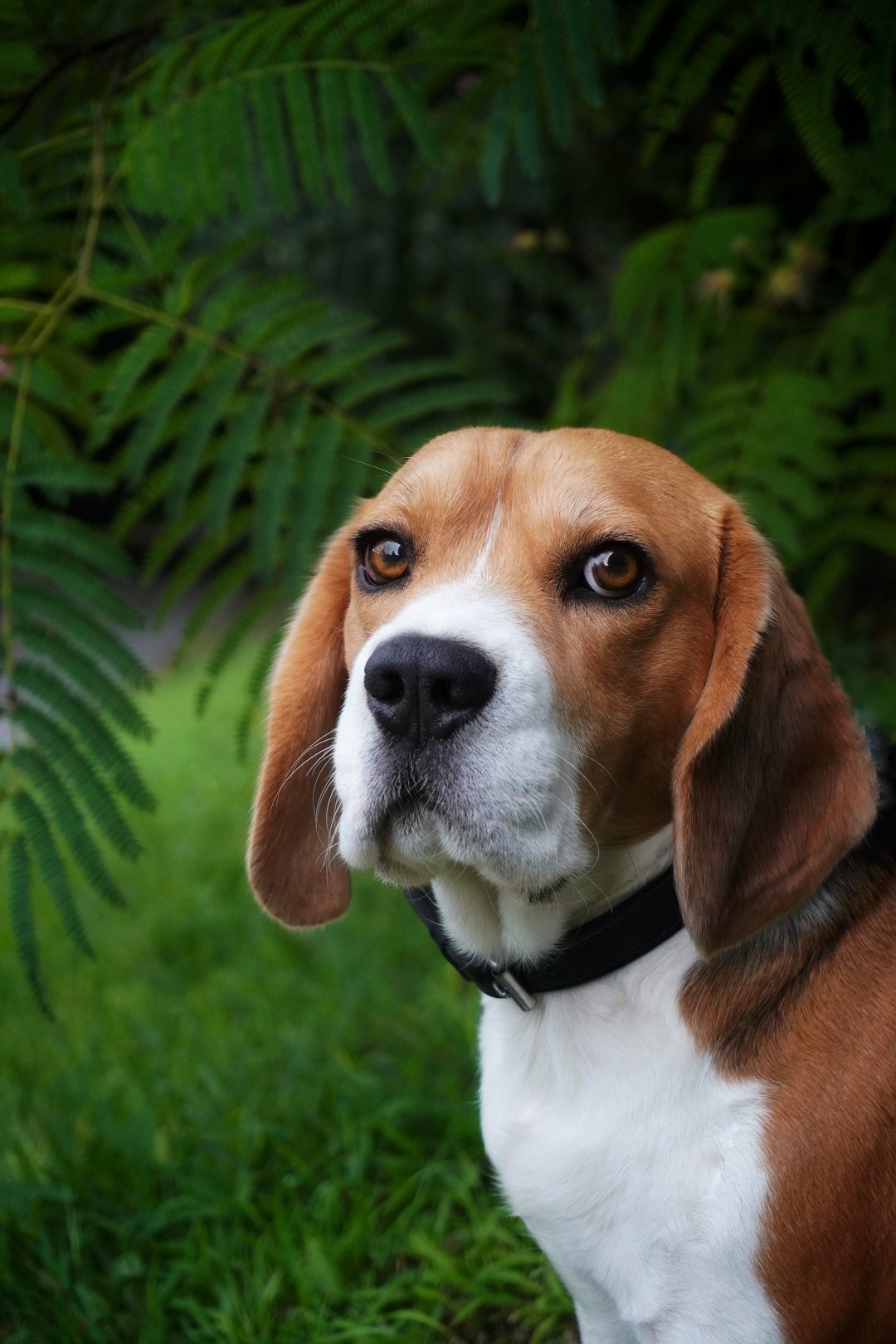Table of Contents
- 1 Introduction: The Power of Capturing in Beagle Training: A Positive Reinforcement Technique
- 2 Understanding the Purpose of Capturing in Beagle Training
- 3 Understanding the Purpose of Capturing in Beagle Training
- 4 Implementing Effective Capturing Techniques for Beagle Training
- 5 FAQs About: What is capturing in beagle training?
- 5.1 What is capturing in beagle training?
- 5.2 How does capturing work in beagle training?
- 5.3 Can capturing be used for all types of beagle training?
- 5.4 What are the benefits of using capturing in beagle training?
- 5.5 How do I implement capturing effectively in beagle training?
- 5.6 Are there any tips for successful capturing in beagle training?
Introduction: The Power of Capturing in Beagle Training: A Positive Reinforcement Technique
Have you ever wondered what capturing in beagle training is all about? Well, capturing is a powerful technique that utilizes positive reinforcement to shape desired behaviors in your furry friend. It’s like capturing a precious moment on camera, but instead of a photo, you capture your beagle’s actions and reward them. This method allows you to focus on encouraging good behavior rather than punishing the bad. In this article, we will delve into the purpose of capturing in beagle training and explore how you can implement effective capturing techniques to enhance your training sessions. So, let’s dive in and unlock the secrets of this remarkable training method.
Understanding the Purpose of Capturing in Beagle Training
Capturing in beagle training serves as a valuable tool to reinforce positive behaviors and strengthen the bond between you and your furry companion. Instead of relying solely on obedience training or other specific training methods like scent training or agility training, capturing takes a different approach. It involves observing your beagle’s natural actions and rewarding them when they display a desired behavior spontaneously. By capturing these moments and providing positive reinforcement, you can encourage your beagle to repeat those behaviors willingly. This technique not only helps in training but also fosters a positive and enjoyable learning experience for both you and your beagle. Now, let’s explore the effective capturing techniques you can employ to make your beagle training sessions more successful.
Understanding the Purpose of Capturing in Beagle Training
Capturing is a valuable technique in beagle training that utilizes positive reinforcement to teach desired behaviors. It involves rewarding the dog for spontaneously performing a desired behavior without any prior cue or command. This method is particularly effective for beagles, as they are highly intelligent and respond well to positive reinforcement.
Benefits of Capturing in Beagle Training
- Encourages natural behaviors: By capturing a behavior that the beagle naturally exhibits, such as sitting or lying down, we can reinforce and encourage these behaviors. This helps the beagle understand that certain actions lead to positive outcomes, making them more likely to repeat those behaviors in the future.
- Builds a strong bond: Capturing allows for a positive and rewarding interaction between the owner and the beagle. It creates a sense of trust and establishes a strong bond, as the beagle learns that good behavior leads to praise and treats from their owner.
- Enhances problem-solving skills: When a beagle is rewarded for a behavior they spontaneously perform, it encourages them to think and problem-solve. They learn to associate their actions with positive outcomes, which can help them develop problem-solving skills in other areas of their training.
Implementing Capturing Techniques in Beagle Training
- Always be prepared: Keep treats or a clicker handy so that you can immediately reward the beagle when they exhibit a desired behavior. This ensures that you can capture the behavior in the moment and reinforce it effectively.
- Observe and anticipate: Pay close attention to your beagle’s behavior and anticipate when they might perform a desired behavior. For example, if you notice your beagle naturally sitting down, be ready to capture the behavior by using a clicker or verbally praising them, followed by a treat.
- Be consistent: Consistency is key in capturing. Make sure to reward the beagle every time they perform the desired behavior, even if it is unintentional at first. This helps them understand the connection between their actions and the reward.
- Gradually introduce cues: Once the beagle consistently performs the desired behavior, you can introduce a verbal cue or hand signal to associate with the behavior. This allows you to eventually transition from capturing to command training.
By understanding the purpose and implementing effective capturing techniques in beagle training, you can establish a strong foundation for obedience training, scent training, agility training, and other aspects of your beagle’s training journey. Capturing not only reinforces desired behaviors but also fosters problem-solving skills and strengthens the bond between you and your furry companion. In the next section, we will explore the implementation of effective capturing techniques for beagle training in more detail.
Implementing Effective Capturing Techniques for Beagle Training
Capturing is a powerful positive reinforcement technique that can be highly effective in training beagles. It involves capturing and rewarding desirable behaviors displayed by the dog, which helps reinforce those behaviors and encourages the dog to repeat them in the future. Here, we will discuss some effective techniques for implementing capturing in beagle training.
1. Start with Basic Behaviors
When implementing capturing techniques, it is important to start with basic behaviors that are easy for your beagle to perform. This could include behaviors such as sitting, lying down, or offering a paw. By starting with simple behaviors, you set your beagle up for success and make it easier for them to understand what you are rewarding.
2. Be Patient and Observant
Capturing requires patience and keen observation. You need to be alert and ready to reward your beagle as soon as they display the desired behavior. For example, if you are trying to capture the behavior of your beagle sitting, you should have treats ready to reward them as soon as they sit. Timing is crucial in capturing, as the reward needs to be delivered immediately after the behavior.
3. Use a Clicker or Marker Word
Using a clicker or a marker word, such as “yes” or “good,” can be extremely helpful in capturing. The clicker or marker word acts as a signal to your beagle that they have performed the desired behavior correctly and a reward is coming. This helps to bridge the gap between the behavior and the reward, making the capturing process more effective.
4. Gradually Raise the Criteria
Once your beagle has successfully learned a basic behavior through capturing, you can gradually raise the criteria to make the behavior more challenging. For example, if your beagle has mastered sitting, you can start capturing the behavior of sitting for longer durations or in different environments. This helps to generalize the behavior and ensures that your beagle understands the command in various situations.
5. Combine Capturing with Other Training Techniques
While capturing can be a powerful technique, it is important to remember that it is just one tool in your training toolbox. Combining capturing with other training techniques, such as obedience training or leash training, can provide a well-rounded training experience for your beagle. This helps to reinforce the captured behaviors and ensures that your beagle is well-trained in various aspects.
By implementing these effective capturing techniques in beagle training, you can harness the power of positive reinforcement to teach your beagle a wide range of behaviors. Remember to be patient, observant, and consistent in your training efforts, and always reward your beagle promptly for displaying the desired behaviors. With time and practice, capturing can become an invaluable tool in your beagle’s training journey.
FAQs About: What is capturing in beagle training?
What is capturing in beagle training?
Capturing in beagle training refers to a positive reinforcement technique where you reward your beagle for exhibiting a desired behavior spontaneously, without any prompting or cues from you.
How does capturing work in beagle training?
Capturing works by observing your beagle closely and rewarding them immediately when they naturally display the desired behavior. This helps reinforce and strengthen the behavior over time.
Can capturing be used for all types of beagle training?
Yes, capturing can be used for various types of beagle training, including obedience training, scent training, agility training, leash training, crate training, house training, recall training, and more. It is a versatile technique that can be applied to a wide range of behaviors.
What are the benefits of using capturing in beagle training?
Using capturing in beagle training has several benefits. It allows your beagle to learn at their own pace, encourages them to think and problem-solve, builds their confidence, enhances their bond with you, and promotes positive behavior through rewards and reinforcement.
How do I implement capturing effectively in beagle training?
To implement capturing effectively, keep treats or rewards handy at all times, observe your beagle closely for any desired behavior, and immediately reward them with praise and treats when they display the behavior. Consistency, timing, and positive reinforcement are key to successful capturing.
Are there any tips for successful capturing in beagle training?
Yes, here are a few tips for successful capturing: be patient and observant, use high-value treats to motivate your beagle, keep training sessions short and frequent, gradually raise the criteria for the behavior, and always end on a positive note. Remember, capturing is all about rewarding the behavior you want to see more of.






Leave a Reply